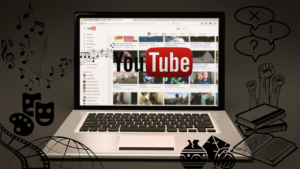
Since its creation in 2005, YouTube has become the biggest online video platform in the world: over 2 billion users, more than 75 billion monthly visits, and, as an example, around 500 hours’ worth of video posted every single minute in April 2022.
Allowing users to share and access an infinite amount of audiovisual material, from all forms of art to all sorts of cultural, scholarly and political topics, YouTube has impacted pretty much every personal and professional field. Within its rules and algorithm, there are very few limits to the themes and types of content that one can find on the website.
Its wide reach is incredibly influential to cultural and social trends, appealing to a large spectrum of tastes and needs. While the most famous YouTube channels are usually focused on entertainment, there are a lot of educational content creators who provide dynamic, interactive and engaging resources and help users learn casually without the limitations and pressures of the school system. You can discover a selection of educational videos in our dynamic library.
Many organisations and institutions have taken to the platform as a medium of communication and information, such as NASA or National Geographic, and even the European Parliament, sharing official documentation that’s expected to be reliable and accurate due to the expertise of its authors as opposed to amateur or unverified channels.
Unfortunately, the reason why YouTube is so popular is also the root of its major pitfall, besides copyright and censorship issues: similar to the criticism against other social media platforms or websites like Wikipedia, the fact that anyone can post anything without necessarily doing their research is one of the main drawbacks of using YouTube as a source of information, taking part in the spread of “fake news”. This makes it necessary to fact-check the contents and sources of a video before using or sharing it and to make sure it’s consistent and appropriate for the target group.
But the opposite side of that problem exists with all social media: the opportunity to raise awareness about a variety of experiences, lifestyles and identities, taking part in activism and social progress, creating a sense of community and engagement among marginalised folks, amplifying their voices and teaching about tolerance, equality and diversity with individual and relatable examples.
YouTube has therefore become a tool for inclusion, catering to diverse ways of living, thinking and learning and making academic subjects more accessible with simplified, condensed or illustrated adaptations. The platform can be an extremely beneficial tool for accommodating students who face learning disorders, neurodivergence or socioeconomic obstacles and who may have trouble retaining large amounts of information in a formal setting.
Teaching methods which involve one’s preferences, personal practices and audiovisual material have proven to be effective in improving motivation and understanding, allowing knowledge to be communicated through a perceived form of entertainment so that it “doesn’t feel like a lesson” and relieving various pressures, expectations and stressful factors which can cause pupils to struggle with traditional pedagogy.
Using online video content can also enhance homework and study sessions, considering students can access it from anywhere with an internet connexion, can pause and rewind as needed and will be more motivated to watch a video than to complete a written assignment or revise a text, especially if their memory works well with visual and audio formats and if the content is adapted to their needs or made especially for them.
Our e-learning course provides step-by-step instructions to help create your own educational videos, our pedagogical sequences suggest lesson plans and activities using online content to explore various topics, and our safety resources propose data, advice and tools to avoid the pitfalls and risks of social media. As technology affects many aspects of our lives, it is important for educators, parents and students alike to understand the impact of online platforms like YouTube and to know how to use them to our advantage.
References:
- YouTube – Statistics & Facts. (2023, August 31). Statista. https://www.statista.com/topics/2019/youtube/#topicOverview
- ThinkwithGoogle. (2021). Making an impact on the cultural landscape: The power of YouTube. Think With Google. https://www.thinkwithgoogle.com/intl/en-154/consumer-insights/consumer-trends/making-impact-cultural-landscape-power-youtube/
- Gaille, B. (2017, January 13). 11 Pros and Cons of YouTube in Education. BrandonGaille.com. https://brandongaille.com/11-pros-and-cons-of-youtube-in-education/
